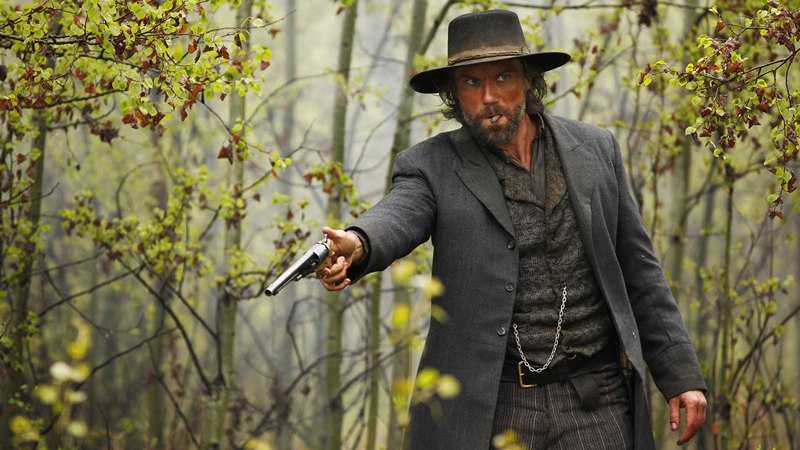The History Channel made history this year with “Hatfields & McCoys,” a three-part miniseries that earned 16 prime time Emmy nominations—a record for History Channel productions. Part 1 drew an audience of 13.9 million, enough to set a new record for single-broadcast ad-supported cable TV.
Filmed in the Carpathian Mountains of Transylvania—apparently it was cheaper and the mountains were closer to what the Appalachians of West Virginia and Kentucky would have looked like in the late 1800s—“Hatfields & McCoys” is a violent, star-studded six-hour drama. Kevin Costner plays “Devil Anse” Hatfield, while Bill Paxton is “Ol’ Ran’l” McCoy, two men whose service in the Civil War took two very different turns. But it’s Jim Vance (Tom Berenger) whose just plain nasty streak provides the spark that sets off a tinderbox full of grievances both substantial (timber rights) and petty (a missing pig). After that, it’s like the old Mountain Dew commercials, with jugs of moonshine fueling a feud that spills over into Montague and Capulet territory with a side plot involving Anse’s son (Matt Barr) and a McCoy named Roseanna (Lindsay Pulsipher). And when Roseanna moves in with a Hatfield? Why, Hell hath no fury like her angry father, especially when she’s shamed by the lad, who ends up with another woman.
That’s it in a nutshell. The rest is shootin’ and fussin’ and all manner of violence, including a hanging that a father makes his family watch because the Hatfields & McCoys are famous. “Legendary,” is probably the better word, because it’s a tale retold and known the whole country over, but with few details. The History Channel tries to separate the facts from the exaggerations and rumors, but you have to wonder why? After all, as the newsman famously said in “The Man Who Shot Liberty Valance,” “This is the West, Sir. When the legend becomes fact, print the legend.”
The body count rises with every hour, but what kills this miniseries—or to be fair, what turns a much ballyhooed TV drama into a watchable but flawed one—is an overly long beginning, repetitive killing (that starts to feel like an old B movie, where the same shots of Indians falling off their horses were used again and again), sags and slowdowns in the plot, and characters that you find yourself not caring whether they kill each other or not. None of them are terribly sympathetic or interesting, though the actors certainly try their best to bring them to life. Pulsipher does an especially fine job, as do the stars. But it ain’t enough. I frankly enjoyed “Hell on Wheels” more, because it had more in the way of surprises.
Video:
Sony really came through on the transfer, though. “Hatfields & McCoys” looks nothing short of terrific in 1080p, presented in 1.78:1 aspect ratio and brought to Blu-ray (two 50GB discs) via a flawless AVC/MPEG-4 transfer. It’s so sharp and there’s so much detail that you start wishing that director Kevin Reynolds hadn’t opted to run with sepia for the whole film. There are times when you crave color.
Audio:
The audio is equally stunning. Whether it’s the Civil War battlefield or mountain folk popping each other off, bullets zing and zip with believable realism, the sub rumbles with violent thunder, and the rear effects speakers are awash with the sounds of a place. Meanwhile, the dialogue is nicely prioritized so there’s never any need to adjust the volume. The featured audio is an English DTS-HD MA 5.1, with subtitles in English and English SDH.
Extras:
Given the hype that this miniseries had, it’s almost shocking that the only bonus features are a half-hour making-of behind-the-scenes look that’s almost more interesting than the miniseries itself, and an “I Know These Hills” music video by Kevin Costner & Modern West, with Sara Beck.
Bottom line:
In the end, it’s the story that matters most, and this one seems either riddled with holes or filled with so much shooting that you start to become not only desensitized, but a little disinterested. Go ahead. Make my day. Kill yourselves off, I ended up thinking. And so despite some strong production values and performances, the sepia-toned saga ends up being more routine than standout, and more curious than compelling. It feels like something that could have been much more.


